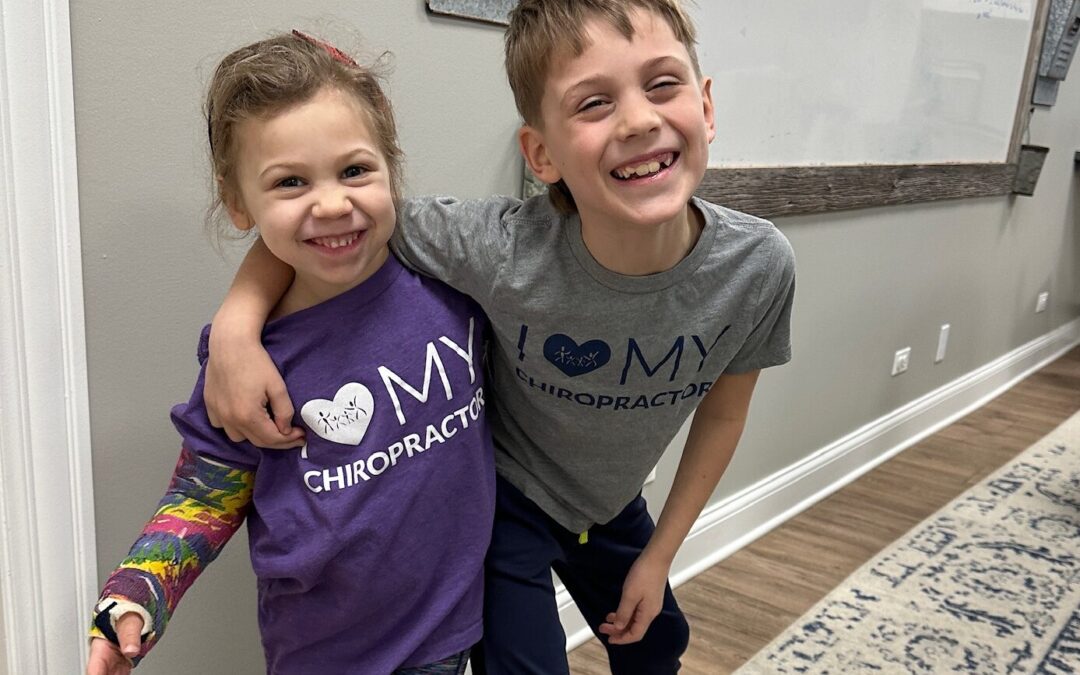Needless to say, Bradley’s mom was beyond alarmed when she found blood in her 3-week-old baby’s diaper. In addition, he was also struggling with reflux and eczema. After rushing her baby to the doctor, Bradley was officially diagnosed with a dairy allergy. The only direction mom was given was to completely cut out dairy from Bradley’s diet. This isn’t all bad, but thankfully she listened to her mom gut and knew there was more going on.
Turns out, the blood in his stool, reflux, and eczema were all related! And if she had just cut out dairy, the actual root cause would never have been addressed and would have led to further challenges as Bradley grew.
What is Food Intolerance?
A food intolerance occurs when your digestive system has difficulty breaking down a particular food, which can also be referred to as food sensitivity. Essentially, your gut is sensitive to certain foods and, in some cases, seemingly can’t tolerate them. When your child consumes these foods, they may experience uncomfortable symptoms like gas, diarrhea, and abdominal pain.
A doctor’s visit may be needed after a reaction is severe to determine whether the reaction is intolerance or an allergy. While both food intolerance and a food allergy can cause discomfort and symptoms after eating certain foods, they are two different conditions.
Unlike a food intolerance that affects your digestive system, a food allergy is an immune response triggered by a specific food. When you have a food allergy, your immune system mistakes a particular food as harmful and produces an allergic reaction. Symptoms of a food allergy can range from mild, such as hives or itching, to severe, such as anaphylaxis, which can be life-threatening. Even a small amount of the allergen can trigger a reaction, and symptoms usually occur quickly after consuming the food. While chiropractic care can certainly help with both challenges, we are focusing on food intolerance today.
What Are Common Food Intolerances?
Food intolerance is pretty common. According to Medical News Today, an estimated 15%-20% of the population has some degree of food intolerance.
Some of the most common food intolerances include:
- Lactose: people who are lactose intolerant don’t make enough lactase enzyme to break down lactose, a sugar found in milk and dairy products.
- Histamine: common foods such as cheese, pineapples, bananas, avocados, and chocolate naturally contain histamines, which are chemical compounds. Histamines can also be found in some red and white wines. When someone is histamine intolerant, it means their body does not produce enough of the enzyme diamine oxidase to break down these chemicals.
- Gluten: this is a protein found in wheat, rye, and barley. A person with gluten intolerance usually experiences discomfort, such as pain, bloating, or nausea, after eating foods that contain gluten.
Other food intolerances that are not as common include the following:
- Fructose intolerance
- Salicylate intolerance
- Food Poisoning
- Food Additives Intolerance
- Antioxidants
- Artificial colorings
- Artificial flavorings
- Emulsifiers
- Flavor Enhancers
- Preservatives
- Sweeteners
- Nitrates
- MSG
- Sulfites
What Are the Symptoms of Food Intolerance?
Food intolerances in children can manifest in various ways, often causing discomfort and distress. Symptoms can range from mild to severe, depending on the child’s sensitivity and the type of food involved. If a child experiences one or more of these symptoms after they consume that food, it’s likely they have a food intolerance.
Common symptoms of food intolerances include:
- Bloating
- Excess gas
- Stomach pain
- Diarrhea
- Migraine
- Headaches
- Runny nose
- Fatigue
- Skin reactions such as hives, eczema, or rashes
Additionally, because there is such a strong link between the gut and the brain via the vagus nerve, food intolerances can often negatively affect a child’s sleep, behavior, emotions, and mood regulation.
What Are the Causes of Food Intolerance?
When seeking advice from a traditional medical doctor regarding food intolerance, it is likely they will attribute the issue to the insufficient production of a specific enzyme required by the digestive system to break down certain foods or ingredients. However, the underlying reason for the deficiency remains unknown to the traditional medical community.
Certain gastrointestinal conditions make you more prone to food sensitivities. These conditions include Celiac disease, Inflammatory bowel disease (IBD), (which includes Crohn’s disease and ulcerative colitis).
Your medical doctor will surely send you to a gastroenterologist. The gastroenterologist will examine or do tests on your gut and probably recommend completely limiting or cutting out the food or ingredient responsible for the food intolerance from your diet. But by focusing solely on the gut, they are missing the true root cause of food intolerance.
They need to look deeper… WHY does a child have a hard time breaking down a particular food? We need to go all the way back to the beginning and look at the entire nervous system to get to the root cause of every food intolerance. This is where neurologically focused-chiropractic care comes in.
As neurologically focused pediatric chiropractors, our job is to start at the very beginning. Many of these challenges, such as reflux, colic, and food sensitivities, start from birth trauma. During birth, trauma can occur in various ways, such as prolonged labor, use of forceps or vacuum extraction, or c-section. These events can cause physical trauma to the baby’s body, resulting in subluxation, and lead to stress responses in the nervous system that leaves it in an excessive, sustained sympathetic response.
This neurological imbalance, called dysautonomia, limits the gut’s ability to function properly, often resulting in problems with absorption, breaking down, and eliminating foods and toxins. Additionally, when the nervous system is in sympathetic dominance, it leaves the body in a pro-inflammatory state, leading to an excessive response commonly seen with food intolerance.
So many kids that come in for chiropractic care have a history of significant stress that started with birth intervention/trauma that led to vagus nerve dysfunction, which in turn affects the gut. The autonomic nervous system is the boss of all other body systems, therefore, responsible for regulating many bodily functions, including those of the gastrointestinal tract. If the gut is not working properly, it may be unable to break down certain foods or ingredients, thus resulting in food intolerance.
These challenges can be just the start of what we call the Perfect Storm. Instead of babies “growing out of” things like colic and reflux, they grow into serious immune challenges, chronic ear infections, sensory processing challenges, anxiety, etc.
We also recognize a connection between eczema and the gut. While eczema is an inflammatory skin condition, it is often accompanied by digestive symptoms. When your gut is inflamed or irritated, that will release toxins that can trigger eczema flare-ups. So it makes perfect sense that Bradley was suffering from not only food sensitivity but reflux and eczema as well.
The main trigger of all these challenges so often is a subluxated, dysfunctional nervous system.
How is Food Intolerance Managed?
If your child is struggling with food intolerance and completely unable to eat certain foods, the first step is to schedule a consultation with a neurologically focused, trained Pediatric Chiropractor who can deep dive into your child’s case history and look for exact triggers and root causes.
They will use our incredible technology called INSiGHT scans that can locate exactly how much and where the subluxation lies within your child’s nervous system. This information will help your Pediatric Chiropractor put together a personalized care plan for your child and determine the exact frequency and type of adjustments needed to get your child’s nervous system back on track and working at its full potential.
Once Bradley began chiropractic care, not only did his “dairy allergy” disappear entirely, but so did his eczema and reflux. Mom also reported that he was sleeping better and had fewer illnesses. The best part, he is able to enjoy ice cream!
To find your local PX Doc, simply head over to our PX Docs directory and reach out to schedule your consultation and examination today. Our mission is for all kids to experience optimal health, try unique foods without worry, and enjoy ice cream, of course!









